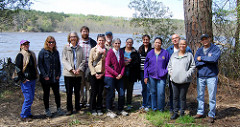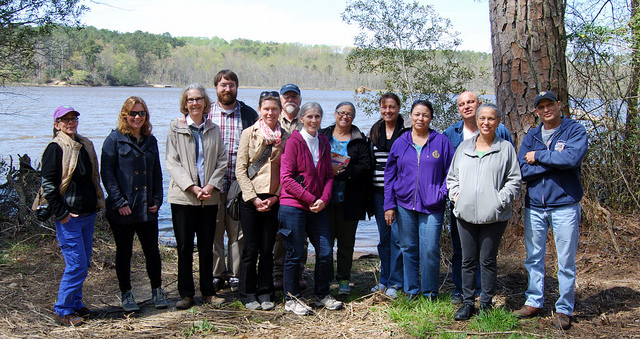 St. Mary’s College of Maryland Professor of Anthropology Julia King, in collaboration with the Virginia Department of Historic Resources (DHR), Chesapeake Conservancy, and the state-recognized Rappahannock Tribe of Virginia, have been awarded a $240,000 grant by the National Endowment for the Humanities to trace the history and development of the Rappahannock Indians in early American history (200-1850 AD). The grant was one of 245 humanities projects from across the country awarded a combined $39.3 million from the NEH. Competition for these grants is rigorous, with a 14 percent success rate.
St. Mary’s College of Maryland Professor of Anthropology Julia King, in collaboration with the Virginia Department of Historic Resources (DHR), Chesapeake Conservancy, and the state-recognized Rappahannock Tribe of Virginia, have been awarded a $240,000 grant by the National Endowment for the Humanities to trace the history and development of the Rappahannock Indians in early American history (200-1850 AD). The grant was one of 245 humanities projects from across the country awarded a combined $39.3 million from the NEH. Competition for these grants is rigorous, with a 14 percent success rate.
The anthropology department at St. Mary’s College first began studying the Rappahannock River valley’s history in 2016 at the request of the National Park Service Chesapeake Bay office and the Chesapeake Conservancy. The work was undertaken to provide interpretive support for the Captain John Smith Chesapeake National Historic Trail and led to the Rappahannock Indians’ return to the river when former Senator John Warner and his daughter, Virginia Warner, donated land to the Rappahannock in their ancestral homeland.
Professor of Anthropology Julia King leads the research team, comprised of anthropology instructor Scott Strickland, an assistant archaeologist, and two archaeology technicians (St. Mary’s College undergraduate students) who will assist with field and laboratory work. They are joined by Chief G. Anne Richardson of the Rappahannock Tribe, who, along with tribal members, will assist with the field and laboratory work.
“Thanks to the NEH grant, we will be able to start addressing some of the recommendations from the original study we conducted in 2016,” King said. “We hope to assemble a detailed culture history for the Rappahannock Indians in the river valley over the last 2000 years, including archaeological collections-based analysis and a regional survey.”
Chief Richardson said, “for the first time, the Tribe is partnering to explore and discover archaeological evidence of the Tribe’s occupation on the Rappahannock River. This project will verify timeframes and establish territory, towns, and oral traditions of the Tribe which have not been discovered before on the Rappahannock River.”
This research tracing the history and development of the Rappahannock indigenous cultural landscape is supported by the National Endowment for the Humanities. NEH supports research and learning in history, literature, philosophy, and other areas of the humanities by funding selected, peer-reviewed proposals from around the nation. Any views, findings, conclusions, or recommendations expressed in this press release, do not necessarily represent those of the National Endowment for the Humanities.
St. Mary’s College of Maryland is accredited by the Middle States Commission on Higher Education through 2024-2025. St. Mary’s College, designated the Maryland state honors college in 1992, is ranked one of the best public liberal arts schools in the nation by U.S. News & World Report. Approximately 1,700 students attend the college, nestled on the St. Mary’s River in Southern Maryland.

Chief Anne Richardson of the Rappahannock Indian Tribe and Joe McCauley of the Chesapeake Conservancy confer visit agricultural fields where ancient Indian sites are located.

Rappahannock tribal leaders, Prof. Julie King, Scott Strickland ’08, and Catherine Dye ’17 stop for a photo at Menokin Bay.


